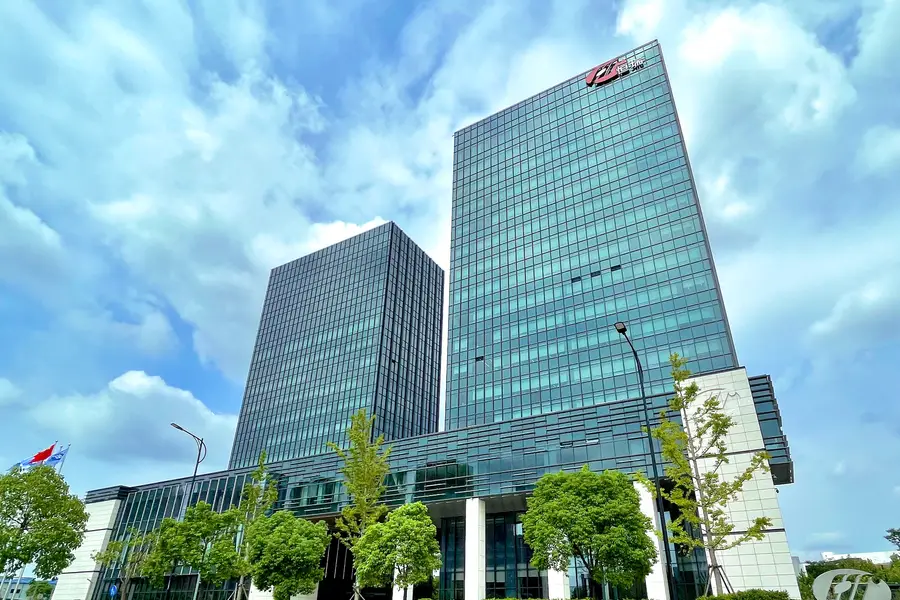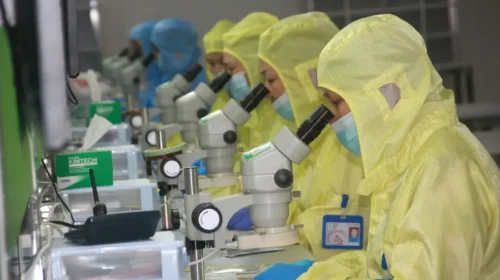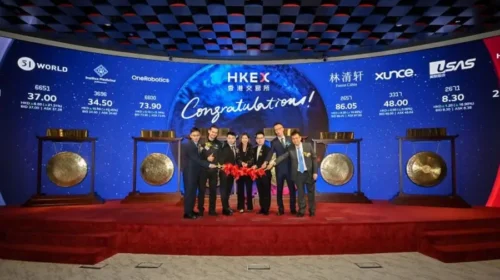Hengrui Pharma targets obesity drug launch after test success

The Chinese drug company is looking to break into the big league for weight-loss treatments after its injection demonstrated sustained weight loss in Phase Three trials
Key Takeaways:
- Participants receiving the highest dose in the 48-week Chinese trial were said to lose up to 19.2% of their weight
- The Hengrui Pharma drug targets the same receptors as Eli Lilly’s blockbuster product tirzepatide
By Molly Wen
A leading Chinese drug developer has moved a step closer to joining multinationals in the booming market for weight-loss medications.
Two months after listing its shares in Hong Kong, Jiangsu Hengrui Pharmaceuticals Co. Ltd. (1276.HK; 600276.SH) delivered a piece of good news for investors with positive trial data for a dual-acting obesity drug that targets the same peptide receptors as Eli Lilly’s hugely successful product tirzepatide.
The results of the Phase Three trial clear the way for the Chinese drug developer to apply for domestic marketing approval for its GLP-1/GIP injection as a new contender in the hotly contested market for weight-control medicines.
Since the company made its Hong Kong debut, the stock has traded at a premium of around 10% over its Shanghai-listed shares, indicating a higher degree of confidence among international investors about its potential. The promising results from the Chinese clinical trial have bolstered hopes that Hengrui Pharma could ultimately take on the global pharma giants with its self-developed anti-obesity injection.
The trial outcome was jointly announced by Hengrui Pharma and its U.S. partner Kailera Therapeutics on July 15. They said the drug had achieved the targeted outcomes, demonstrating sustained weight loss with limited side effects. Hengrui Pharma will now apply for domestic drug approval while Kailera, which has development rights for the rest of the world, plans to take the product forward to global clinical trials.
The Chinese trial enrolled 567 participants who were divided into four groups receiving different doses of the drug, HRS9531, or a placebo. Doses of 2 mg, 4 mg or 6 mg were administered to the three actively treated groups. The drug attained the key endpoints in terms of the scale and proportion of weight lost during the trial, the statement said.
In the 48-week trial, participants taking HRS9531 achieved a mean weight loss of up to 17.7%, while 88% of participants given the drug achieved at least 5% weight loss, the companies said. Those given 6 mg doses lost up to 19.2% of their weight, experiencing no plateau in weight loss.
The results were also favorable for safety and side effects, consistent with other GLP-1 treatments and previously reported Phase Two data, the statement said. Treatment-emergent adverse events (TEAEs) were described as mostly mild to moderate, relating to gastrointestinal effects.
Rights to the drug outside of Greater China were licensed in May last year to a newly founded U.S. biotech company, Hercules, that later changed its name to Kailera Therapeutics. In that deal, Hengrui Pharma licensed out three of its GLP-1 products including HRS9531 in exchange for $110 million in upfront and near-term payments, 19.9% of the U.S. partner’s shares, up to $200 million linked to development and regulatory milestones, and up to $5.725 billion based on sales milestones.
Fierce competition over GLP-1 drugs
Novo Nordisk kicked off the new wave of obesity drugs with the active ingredient semaglutide, approved as a weight management treatment by U.S. regulators in 2021 and in the Chinese mainland three years later. The medication mimics a hormone that binds with the GLP-1 receptor to regulate blood sugar and appetite. After success in directing semaglutide at a single receptor, the industry started to explore multi-target drugs to make the treatments more effective. These targets include GIP and GCG receptors that help the body manage blood sugar, fat intake and digestion.
The runaway success of semaglutide, which has racked up annual sales of $10 billion for the last three years, sparked a race to develop similar products in China. Mainland companies are now working on more than 200 weight-loss pipelines, ranging from single-target GLP-1 products to dual-acting GLP-1R/GIPR drugs and even GLP-1R/GCGR/GIPR versions directed at three receptor points, according to data from industry tracker PharmCube.
Among them, the fastest progress is being made by mazdutide, licensed by Innovent Biologics (1801.HK)from Eli Lilly. The product was approved by China’s medical watchdog on June 27 for long-term weight control among obese or overweight adults, becoming the world’s only GCG/GLP-1 agonist to get the regulatory green light so far.
Hengrui Pharma’s drug, like tirzepatide, has a GLP-1/GIP focus. Tirzepatide, which outperforms semaglutide for weight loss and reduced waist circumference, was approved in China for long-term weight control in July 2024. Semaglutide is still a bigger earner but tirzepatide is gaining momentum, according to first-quarter earnings data from the makers of the rival drugs.
Revenues from Novo Nordisk’s Wegovy, the weight-loss version of semaglutide, rose 83% to 17.36 billion Danish kroner ($2.7 billion) in the quarter while Eli Lilly’s obesity drug Zepbound, based on tirzepatide, logged turnover of $2.31 billion, a 347% year-on-year rise.
Those big-name pioneers still dominate the Chinese weight-loss space, but the high-growth market has plenty of room to expand. Hengrui Pharma currently trades at price-to-earnings (P/E) ratio of 64 times, a significant premium over Novo Nordisk’s 18 times. However, Hengrui Pharma looks to be on track to launch China’s first independently developed GLP-1/GIP product and, if successful, could reshape the country’s dietary drug market.
To subscribe to Bamboo Works free weekly newsletter, click here




